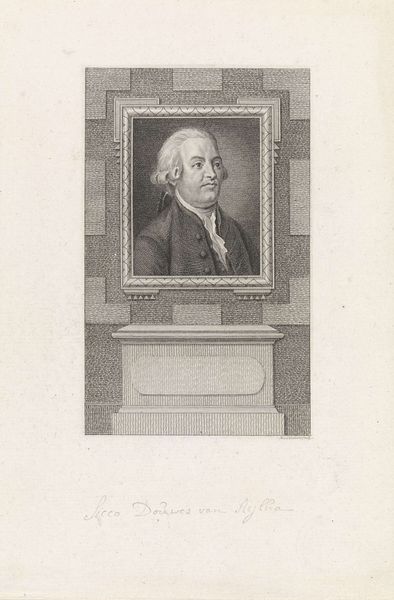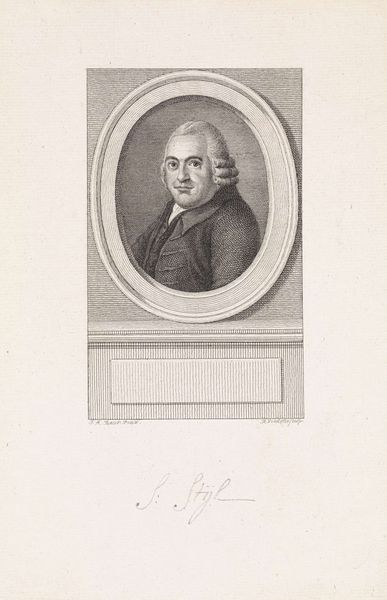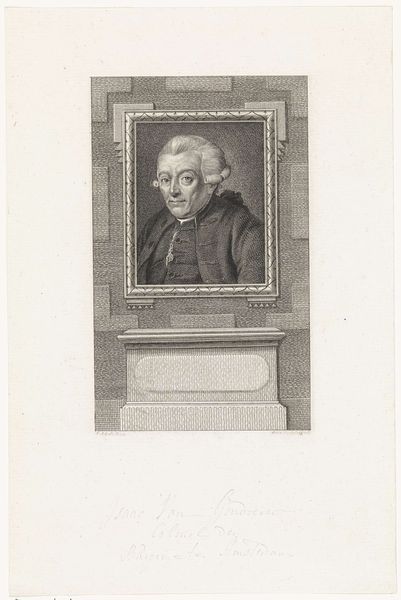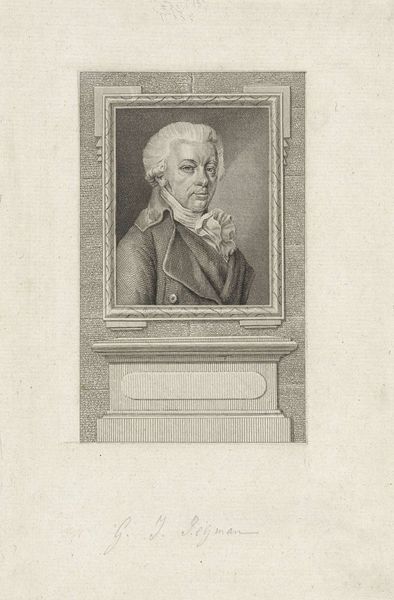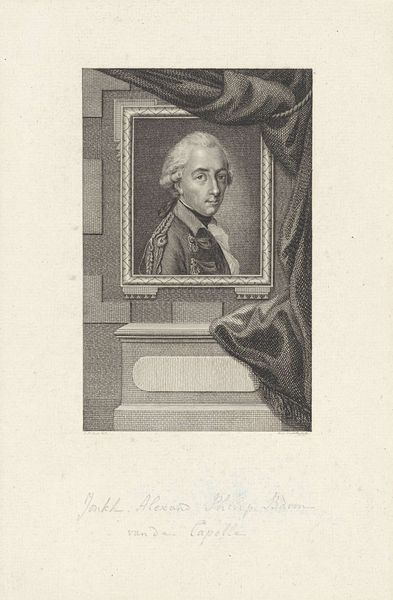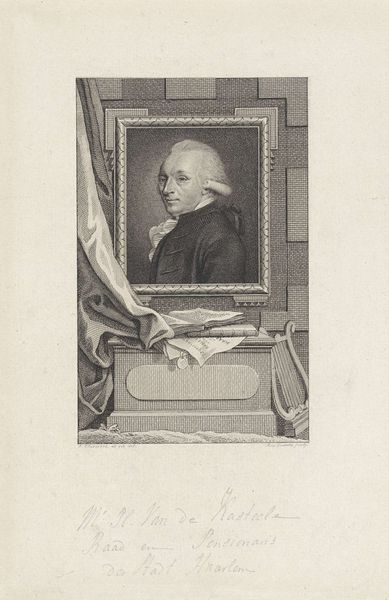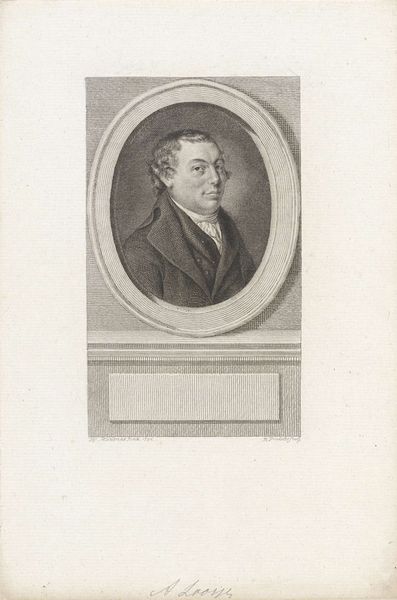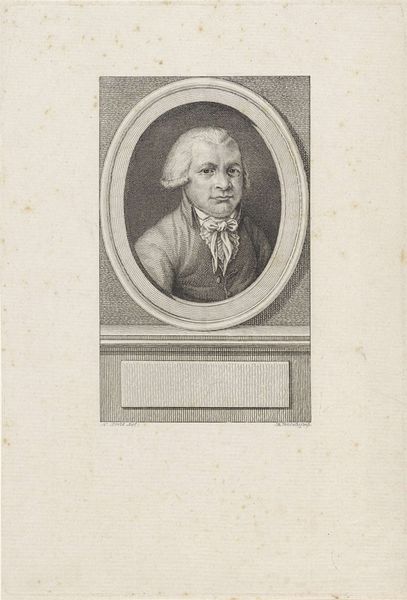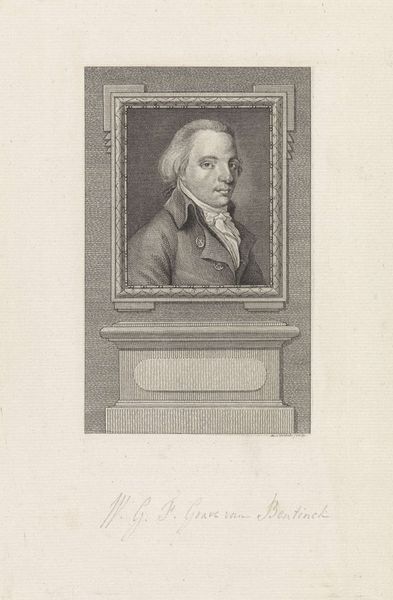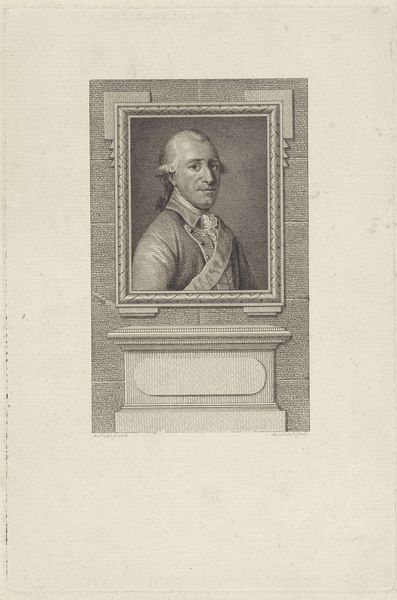
print, engraving
#
portrait
#
pencil drawn
# print
#
old engraving style
#
pencil drawing
#
graphite
#
engraving
#
realism
Dimensions: height 239 mm, width 160 mm
Copyright: Rijks Museum: Open Domain
Editor: This is Reinier Vinkeles’s "Portret van Franciscus Gualtherus Blok," dating from around 1786 to 1809, created as an engraving. It gives a strong sense of formality, doesn’t it? What do you make of this piece? Curator: This portrait presents a fascinating intersection of class, representation, and power. Consider the subject: a member of the societal elite immortalized through print. Who had access to these images? Who controlled their dissemination? The very act of creating and circulating this portrait reinforces existing power structures. Editor: So, you’re saying it's more than just a likeness; it's about solidifying social status? Curator: Precisely. Think about the engraver's role. Vinkeles isn't just recording Blok's features. He's participating in a system that elevates certain individuals. The clean lines and idealized presentation contribute to this effect, shaping the viewer’s perception. Can we ignore the colonial backdrop to this era? Blok, as a member of the elite, likely benefited from exploitative economic systems of his time, and is that exploitation in some ways further supported through its art? Editor: I never thought about it that way. I was just focused on the aesthetics. Curator: And the aesthetic choices themselves reflect underlying ideologies. The formality, the framing… all serve to project an image of authority and respectability. It prompts questions around what art can tell us about whose stories get told and who does the telling. Editor: This really changes how I see these older portraits. It’s not just about the individual; it's about the whole social fabric. Curator: Exactly! Hopefully this will empower you to interpret the portrait, considering the subject within this particular moment in history. It gives the work a new voice, doesn’t it? Editor: Definitely! Thank you for providing all of that invaluable context.
Comments
No comments
Be the first to comment and join the conversation on the ultimate creative platform.
